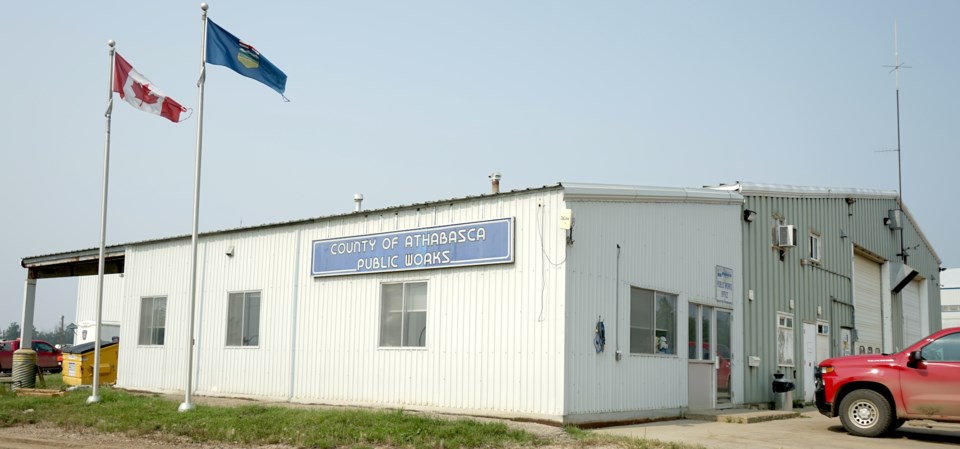ATHABASCA – A new, net-zero public works shop is part of Athabasca County’s five-year capital plan presented to councillors during their opening 2024 budget and finance committee meeting.
Interim CAO Pat Vincent identified the need for the new public works shop as a top-of-list priority during the Aug. 22 meeting, an estimated $3-million project that, if approved, could be funded completely by green construction grants.
“Wouldn’t that be a wonderful proposition … that we get a new public works shop and it’s not costing our taxpayers very many dollars, if any,” Vincent told council during the meeting.
The current shop has been identified as an issue by administration for at least five years, Vincent said in an Aug. 24 follow-up interview. High operational costs and necessary repair expenses, like those for a much-needed new roof, won’t do much to extend the current building’s lifespan.
Coun. Rob Minns, who worked as maintenance foreman at the county for 25 years, noted the shop, located at the top of the hill on the east side of town, was built in 1969 and discussions around a new shop have been informally circulating for at least 10 years.
“It’s served us well over the many years it’s been in service,” said Vincent. “But it’s an old building that simply needs now to be replaced … and now is a good time to start moving forward.”
If approved, Vincent noted the project could be designed as “net-zero” meaning it produces and supplies 100 per cent or more of its energy requirements. Vincent said there’s available funding for green construction grants to minimize costs to the county.
The Green Municipal Fund, a Federation of Canadian Municipalities (FCM) program, has both loans and grants available to municipalities pursuing sustainability projects. Vincent said Athabasca County is eligible for a low-interest loan of up to $5 million through FCM, as well as a grant for as much as 15 per cent of the loan total.
Provincial initiatives include the Municipal Climate Change Action Centre, which provides money for renewable energy projects, money that could cover implementing green technologies like solar power into the project.
County reeve Brian Hall said although the project is still subject to approval, pursuing grants for infrastructure projects is an obvious way to be cost efficient.
“If it’s a project we’re committed to undertaking and we can fund part of it with grant funding, it stretches (county and ratepayers) dollars further,” said Hall.
Money on the table isn’t the only motivating factor for the county as the 2023-2026 Strategic Plan highlights infrastructure investments as a major area of focus for the county, and Hall said sustainable and environmentally-sound practices are on council’s radar.
“Part of (the strategic plan) is reducing our carbon footprint by considering energy efficiency as we build,” Hall said. “When we can improve energy efficiency at a reasonable cost, that piece dividends for many, many years into the future.” He added “If at a time when we’re building new infrastructure, we can do it in a way that reduces our long-term operating costs, that’s just smart.”
Minns echoed Hall’s sentiment, noting a building that pays for itself would be a huge boon to the county, and added in the case a new shop is built, the old one could be used for vehicle and equipment storage.
Vincent said if council approves the project in the upcoming months, design work could start in early 2024, then go to tender later in the year, with construction in 2025.



